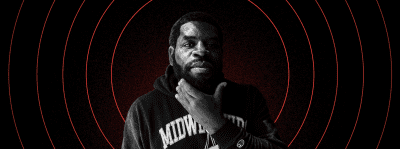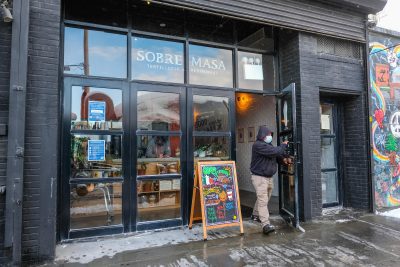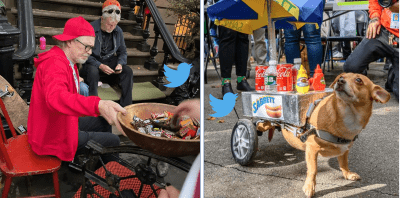Photo illustration by Johansen Peralta
Painter Steve Keene: ‘I’m gonna kill you with my art!’
With the first book exclusively devoted to his art coming in June, Keene joins us on the podcast to discuss his path and process
Like what you’re hearing? Subscribe to us at iTunes, check us out on Spotify and hear us on Google, Amazon, Stitcher and TuneIn. This is our RSS feed. Tell a friend!
When I spoke with Steve Keene last Tuesday, it was on the early side, around 9:30 a.m. Keene, a painter who in his understated fashion describes himself as “a morning person,” had already been up for five hours. He had a dog to walk, he explains. But he also had work to do: He was in the middle of sending 16 orders out, having created 120 paintings in the previous three days alone.
If you’re someone who placed one of those orders, know that he is sorry about the delay. “I feel bad about that because I’ve gotten a lot of press this year,” he says. “Normally I get them out in a couple weeks, but there’s like a five month waiting list.”
About that press attention: Earlier this year, Tractor Beam and Hat & Beard Press announced a plan to publish “The Steve Keene Art Book,” produced by photographer Daniel Efram, on June 14. The Kickstarter-funded 265-page book, which will retail for $95, is the first art book to exclusively profile Keene, who could arguably be considered the most prolific American artist (with at least some name recognition, if we want to hedge).
Keene, who lives in Greenpoint where he paints in a studio he calls “the cage,” is also this week’s guest on “Brooklyn Magazine: The Podcast.”
“I went to art school. I did everything right. Nothing really seemed to be that exciting to me. I could always paint pretty well, OK, I guess. Nothing really turned me on until I started doing everything wrong. Until I started giving everything away,” he says, name-checking Americana painter-predecessors Morris Katz and Howard Finster. “I like folk art. I like stuff that comes from the ground.”
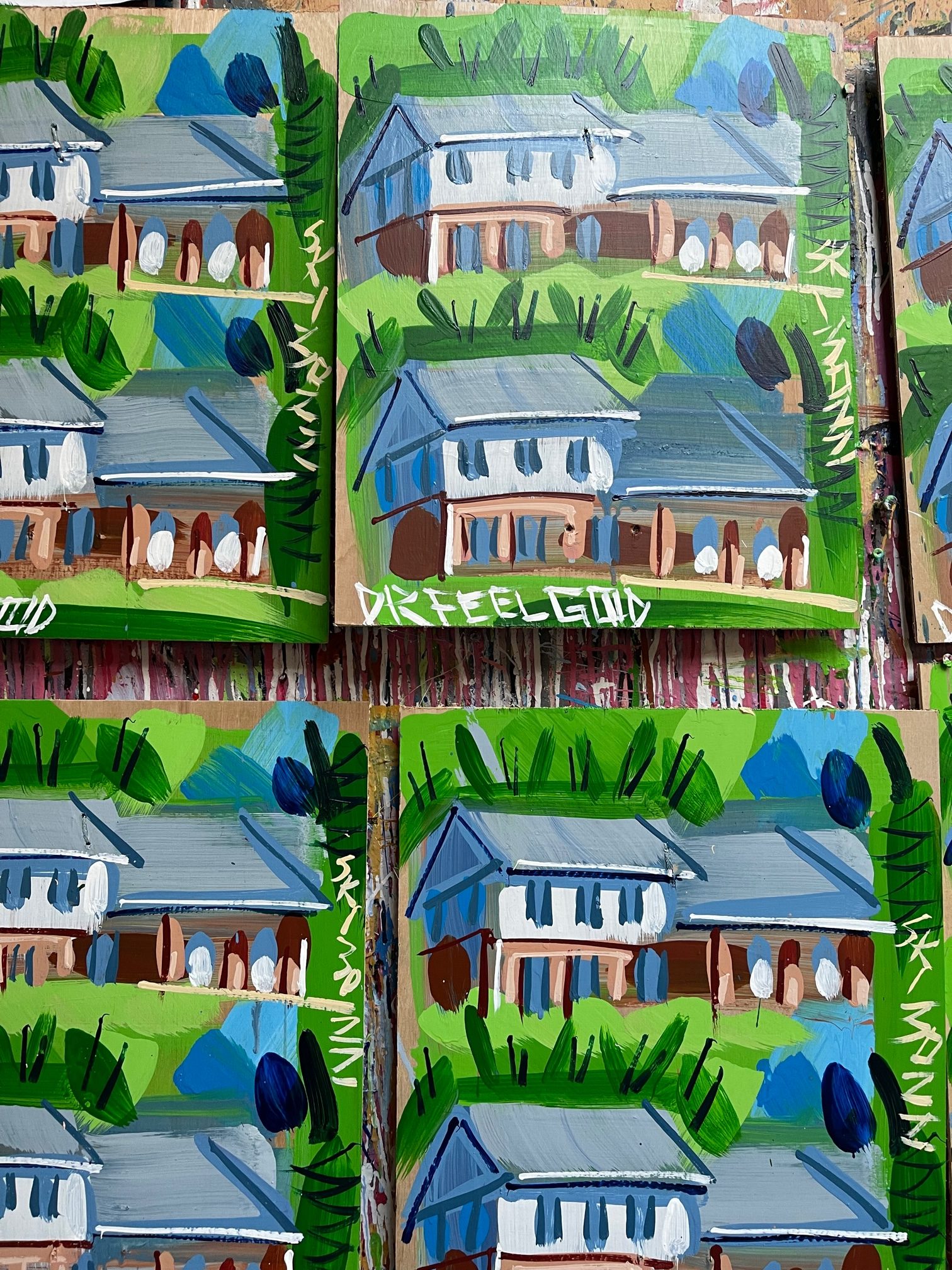
Courtesy Steve Keene
A few more facts about Steve Keene: That “art school” he went to was Yale, where he got an MFA. These days he buys 400 thin sheets of plywood a year as his canvas and cuts them into eight squares each. He creates, by his estimate, a quarter-mile of art a year. He’s sold or given away well north of 300,000 of his paintings, of which he usually creates multiples at a time—slapdash yet distinctive. The brushstrokes thick, the figures he replicates en masse are compelling and relatable. A little blurry.
But. Does this mass-production result in fine Art-with-a-capital-A or just more folksy fare or … something that is both? Or disposable?
“I kind of started this as a stunt, in a way. It’s like, ‘OK you’re not particularly interested in my painting? You’ll never able to look away. They’ll be everywhere!’” he says on the podcast. “It gave me energy. It made me feel punk. ‘I’m gonna kill you with my art!’ And then all different kinds of people, whether they were kids in high school or college art history people, started getting into it. That made me on the right track. I never knew I was going to do this forever. I just see no way of stopping.”
If you live in the borough, you’ve probably seen his work in bars, music venues, coffee shops. You may have a friend who has a Steve Keene original. Maybe you have one yourself. If you were so inclined, you could pick one up for around $5. Which is less than the coffee table book about him will cost when it comes out. It is less, even, than you would pay for one of the records by his friends in Pavement or the Silver Jews—whose albums like “Wowie Zowie” and “The Arizona Record” feature his art as covers.
Those collaborations came in the early 1990s, when Keene moved to Charlottesville after Yale so his wife could attend the University of Virginia. The two got involved at the radio station there and met Pavement members Bob Nastanovich and Stephen Malkmus, as well as David Berman of the Silver Jews, who all hosted shows at the station.
“It’s inspiring that they got so big, that that whole scene got big for what it was. Because they just brought the music, the cool kid 1988 music, to the world. And it was neat that they brought it there,” says Keene, who at nearly 65 cops to being more into “old man music” himself. “We all moved to New York at around the same time, even though I was much older. It was just a neat time. Like, ‘90s indie rock was being invented that year.”
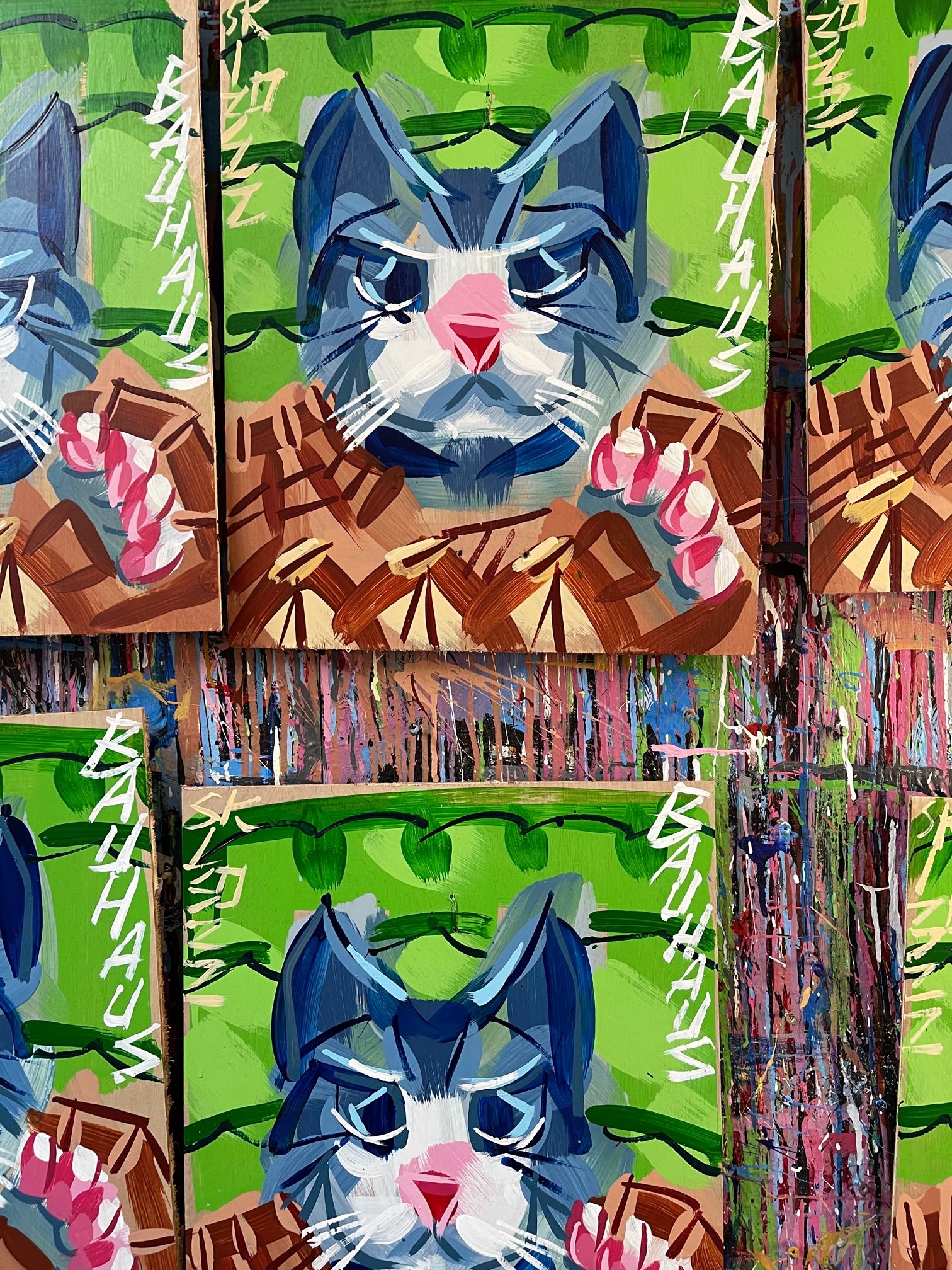

Courtesy Steve Keene
In addition to the folk artists, Keene perhaps unsurprisingly cites Robert Rauschenberg and Andy Warhol as early influences.
“Rauschenberg … took any kind of image and slapped them together and that tell a story. I’m uncomfortable seeing one of my paintings. I like seeing 140 of them all together,” he says. “This is my product, this is my process. If you’re any kind of creative person, it’s terrible to overthink it because it can wreck anything good that might come up. It took me most of my life to try to not overthink what I’m doing. I try my best, but I don’t worry about whether it’s good or bad. That’s why if I paint 100 pictures in a day, it’s like, ‘OK, they’re not great but at least I did 100 of them’.”
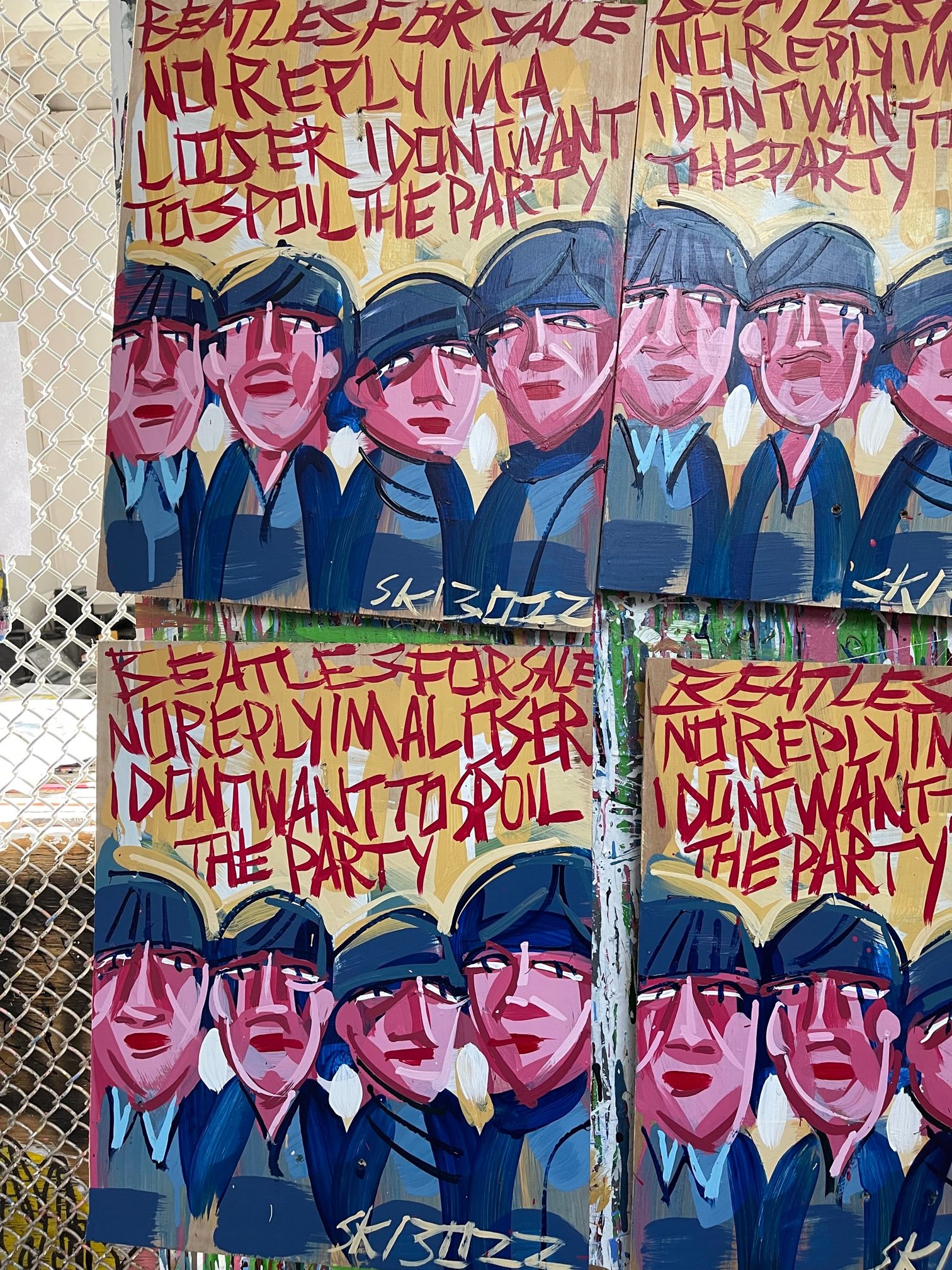

Courtesy Steve Keene
Today he likes walking around Bushwick and is, perhaps counter-intuitively, finding himself drawn to NFTs. “I started becoming fascinated with the Bitcoin stuff and the NFTs and the making an image—one image—on your computer screen. That’s mass produced: That can be in 4 billion phones at once, but somebody can tag their name to the actual origin to that, and that becomes the $800,000 picture,” he says. “I’m fascinated about the value. I give my stuff away. I’ve had museum shows and many good things for just not taking it too seriously, not trying to change $22,000 for a painting.”
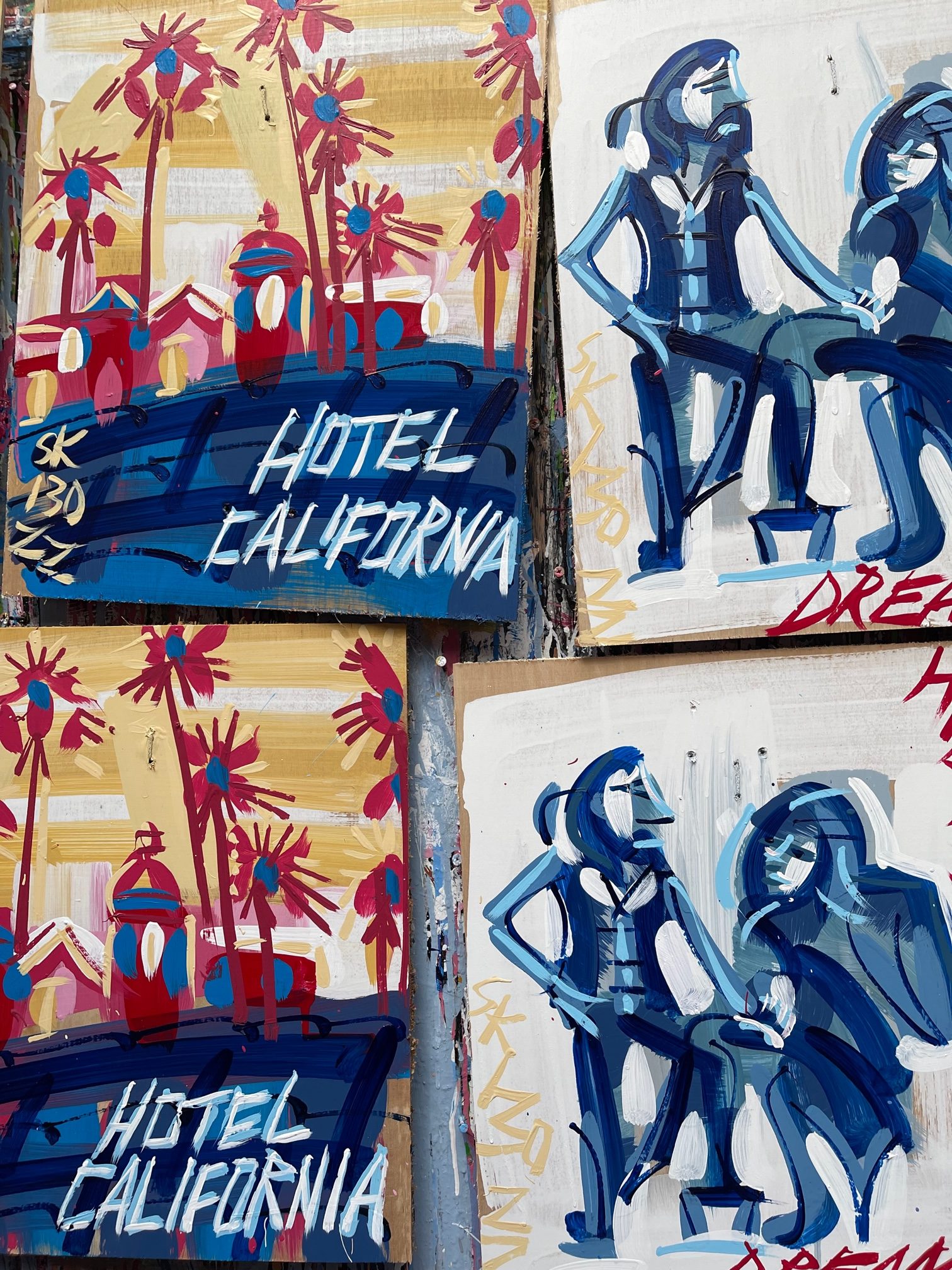

Courtesy of Steve Keene
Check out this episode of “Brooklyn Magazine: The Podcast” for more. Subscribe and listen wherever you get your podcasts.
You might also like 


















